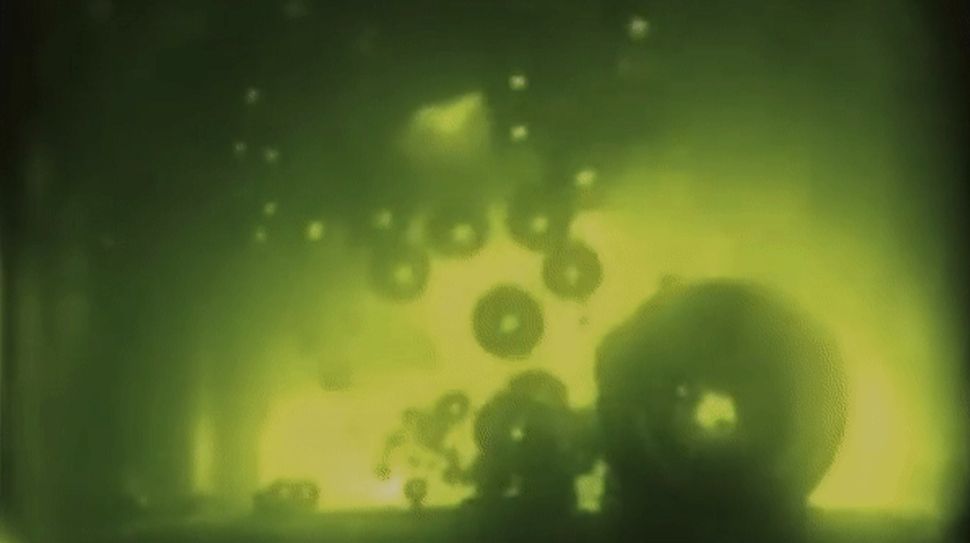
Image Credit: European Space Agency
Surviving and working together in a microgravity environment requires a special set of skills, obtained through creativity and expertise. For example, did you know astronauts preferred tortillas over bread during their space mission? The fact that breads produce crumbs and can create mess if used in space simply removes them from the list of options, hence, tortillas were a solution.
There have been numerous experiments on what and how food should be eaten during a space flight. Storing puree in tubes, dry food items in cubes, etc., were some of the many ways for astronauts to manage eastables during the flights. The conditions in space pose challenges to eating and preparing some food items.
In 1962, John Glenn, an astronaut aboard Friendship 7, demonstrated eating a variety of foods safely in space and proved that swallowing and digestion of variety of foods are possible in microgravity. During the Gemini missions (1962-1966), freeze-dried food and powdered beverages were commonly used by astronauts. They would rehydrate these items with cold water before eating them. Moreover, the US army still uses these kinds of “Ready to Eat” meals but with better taste and options.
The Space Food Systems Laboratory at Johnson Space Center in Houston, Texas manages the food preparation and packaging for NASA astronauts. Astronauts also have the facility to select their meals as they like. The lab focuses on the nutrition content of the food to ensure good health and working efficiency of the crew. They are also involved in the research and development of meals in specific space missions, such as for long-duration missions of up to five years. Foods need to be preserved for a longer time in long-duration space flights. Therefore, it can be consumed after months or years if kept at room temperatures.
Frying Potatoes in space? Possible
Frying is an extremely common type of cooking and is widely used at homes, café, restaurants, street food stalls, etc. It involves multiple concepts of physics and chemistry, which make it a complex process. And, in space everything becomes more convoluted. The thought that frying would work without gravity, had ample room for discussion. While frying potatoes is a common phenomenon on earth, how would it work in space? The anticipation was that in the absence of buoyancy pulling upwards, bubbles might stick to the surface of a potato, shielding the potato in a layer of steam that researchers believed might leave it undercooked and undesirable.

“Ask any chef and they will confirm that the physics and chemistry behind food is a complex and fascinating subject that bubbles over to other science disciplines,” says Professor Thodoris Karapantsios from the Aristotle University of Thessaloniki. A research team from Aristotle University including Professor Karapantsios has conducted a study on the same phenomenon. The study was published in the Food Research International journal in February 2023.
Astronauts can now Cook French Fries in Space
A novel experimental carousel-type apparatus was used to test the frying phenomenon in space whose design ensured safety along with the ability to operate in weightlessness. This equipment was designed to avoid splashing of oil and work at as a constant pressure, and optimum temperature at which the test potatoes had to be cooked.
These experiments were performed during two of the ESA parabolic flight campaigns. Parabolic flight campaigns are the ones in which an aircraft flies in repeated arcs to create brief periods of weightlessness.
The frying process was captured with a high-speed, high-resolution camera. It allowed the team to observe the pattern of bubbles in the oil and its different aspects. Researchers also discovered how quickly the bubbles detached from a potato, a different form of escape velocity. Escape velocity is the minimum speed required for a free, non-propelled object to escape from the gravitational attraction. This is an important parameter during the launch of a spacecraft. Additionally, the scientists also studied the temperatures of both the oil and the interior of the potatoes.
The researchers explain that under the right frying conditions , bubbles were able to easily escape from its surface instead of forming a protective layer. This phenomenon is similar to what happens when the process is done on Earth.
“Apart from nutrition and comfort, studying the process of frying in space could also lead to advancements in various fields, from traditional boiling to producing hydrogen from solar energy in microgravity,” says team member and Aristotle University of Thessaloniki researcher John Lioumbas.
The research can prove to be fruitful for astronauts and space experts if the methods used in the experiment are implemented practically for space missions. Finally, astronauts would be able to have more options to choose from before long duration missions. Moreover, they can extend their time spent in space in future with better food security and alternatives.
This research was published in Food Research International in February 2023.

